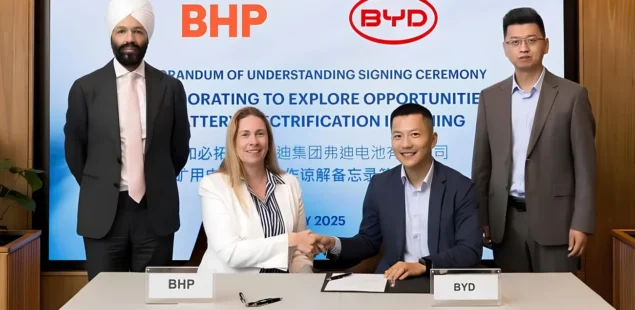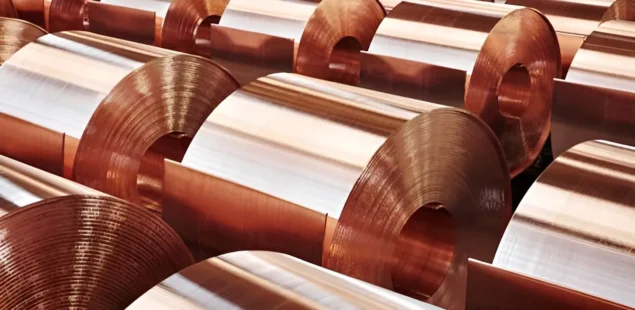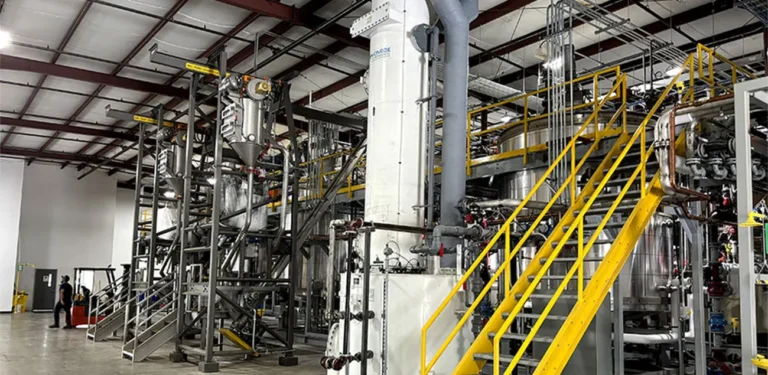
First Primary Aluminium Smelter in the US in Nearly 50 Years
Century Aluminum has begun construction of a new primary aluminium smelter, marking the first such facility built in the US in 45 years. While the exact location has yet to be determined, the company is considering sites near the Ohio or Mississippi rivers. The project is expected to create 5,500 construction jobs and provide permanent employment for over 1,000 workers in electrolysis and related departments.
Century Aluminum secured a $500 million grant from the U.S. Department of Energy last March as part of a federal initiative to strengthen domestic industry and reduce carbon emissions. Aluminium remains a critical metal for the US economy, used extensively in automotive manufacturing, food packaging, and other sectors.
Despite its importance, primary aluminium production in the US has been declining due to high electricity costs and fluctuating alumina prices. While the country produced 1 million tonnes of primary aluminium in 2019, this fell to 750,000 tonnes in 2023. Meanwhile, secondary aluminium production has remained stable at 3 million tonnes per year. To meet demand, US companies import approximately 4.8 million tonnes of aluminium and aluminium-based products annually.
Alaska Positions Itself as a Key Nickel Mining Hub
Alaska Energy Metals is advancing multiple projects across North America to develop deposits containing nickel, cobalt, lithium, and other critical metals for electric vehicles and renewable energy. The company’s flagship project, Nikolai, is currently undergoing exploration, with estimated reserves of 3.7 million tonnes of nickel, alongside significant deposits of cobalt, platinum, palladium, and copper.
In 2024, the company expanded the Eureka zone within the Nikolai deposit, identifying additional high-grade nickel reserves. It is also advancing the Angliers-Belleterre project in Canada, which has shown promising mineralization of nickel, cobalt, copper, and platinum group metals.
With global electric vehicle sales projected to surpass 20 million units in 2025, demand for nickel could double to over 1 million tonnes by 2030. The US remains heavily dependent on nickel imports, primarily from Indonesia and the Philippines, making domestic production increasingly important. The US government has been supporting projects for critical metals development, and Alaska Energy Metals may seek financial assistance in 2025-2026 to advance its Nikolai project.
Cobalt Prices Hit a 10-Year Low Amid Rising Supply
Global cobalt prices have dropped to a decade-low of approximately $24,300 per tonne due to a surge in production. GlobalData estimates that cobalt output will exceed 300,000 tonnes in 2024, marking a 30% increase from 2023. The Democratic Republic of Congo continues to dominate the market, accounting for over 80% of global production, while Indonesia contributes 6.7%.
China’s CMOC Group, the world’s largest cobalt producer, achieved record output of 114,165 tonnes in 2024 and plans to maintain similar production levels through 2025. By 2030, global cobalt production is projected to reach 410,000 tonnes, with new projects emerging in Australia, Canada, and Indonesia. The DRC’s share of global production is expected to fall below 70%.
While cobalt demand surged between 2016 and 2023—driven largely by its use in batteries—it faces an uncertain future. Electric vehicle manufacturers are increasingly adopting lithium-iron-phosphate (LFP) batteries, which do not require cobalt. However, the metal remains essential for high-temperature alloys in aerospace and for alloying steel used in metal-cutting tools.
EU Considers Russian Aluminium Import Ban
The European Commission is proposing a phased ban on Russian aluminium imports. The plan would allow European buyers to continue purchasing Russian aluminium under a quota system for one year, capped at 275,000 tonnes in 2025, before a full ban takes effect.
In the first 11 months of 2023, the EU imported approximately 320,000 tonnes of Russian aluminium, representing 6% of total aluminium imports (2.2 million tonnes). However, European consumers have gradually reduced their reliance on Russian aluminium, increasing purchases from the Middle East and Southeast Asia.
Rusal, Russia’s only primary aluminium producer, has already restructured its supply chains in response to previous restrictions, reducing the EU’s share of its sales from 31% in mid-2023 to 22% by the end of the year. The company is expected to further shift exports to China and other Asian markets, though competition in those regions remains high. If sanctions are imposed, Rusal may be forced to cut aluminium production by an additional 100,000 tonnes, on top of the 250,000-tonne reduction already announced for 2024.
A full embargo on Russian aluminium could drive global prices higher, especially as China imposes production limits that reduce export availability. However, Middle Eastern aluminium producers are expected to meet European demand.
Vale Considers Selling Off High-Cost Nickel Assets
Vale Base Metals, the nickel division of Brazilian mining giant Vale, has announced a strategic review of its Canadian Thompson mining and smelting complex. The company is evaluating options, including a potential sale, as part of a broader reassessment of its global portfolio.
The Thompson complex, located in Manitoba, includes two mines and a smelter, producing 10,500 tonnes of nickel between October 2023 and September 2024. While the region has substantial nickel reserves, developing new deposits will require significant capital investment.
Vale appears reluctant to commit to such investments, particularly given the current weak nickel market. Prices have declined due to rising production and exports from Indonesia, which is expected to remain a dominant supplier in 2025. Unlike Indonesia’s lateritic nickel deposits, Canadian nickel deposits are more complex and costly to process.
As a result, Vale may seek to divest other high-cost assets, particularly those in Canada, while focusing on more profitable operations in Indonesia and other regions.



